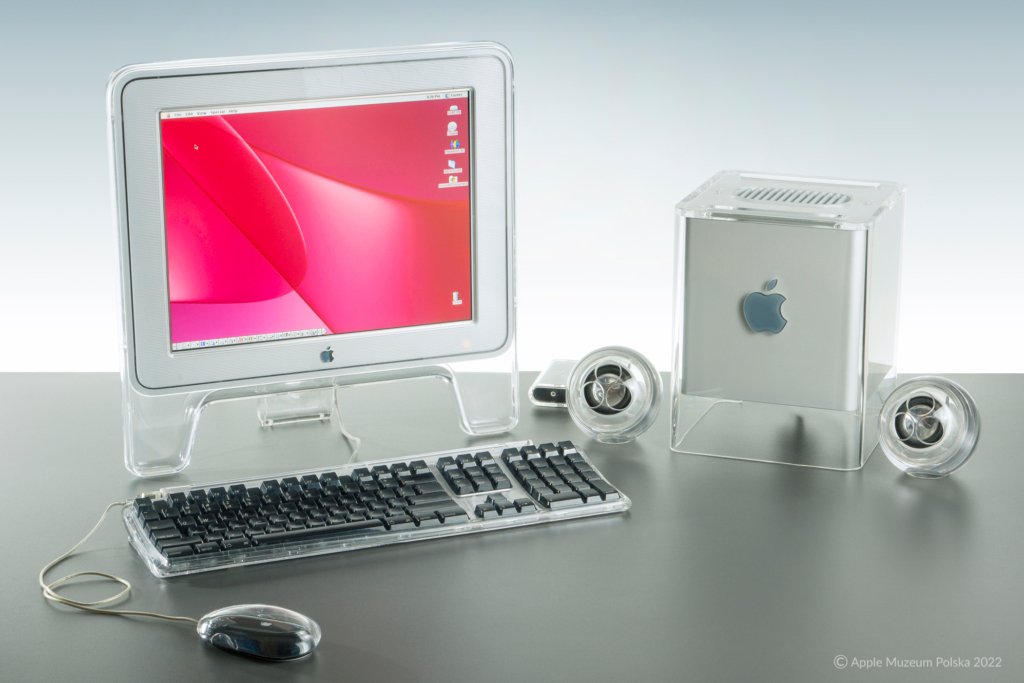When we think of Apple, innovation and cutting-edge technology come to mind. One iconic product that exemplifies Apple’s commitment to excellence is the Apple Studio 15-inch LCD ADC Display. Launched in July 2000 as part of the Apple Studio Display series, this display quickly captured the hearts of Mac users seeking top-notch visual experiences.
Released in conjunction with the Power Mac G4 systems, the Apple 15″ Studio Display ADC introduced users to a new era of visual delight. The 15.0″ viewable area active-matrix LCD display, housed in a “crystal clear” design reminiscent of the Apple Cinema Display, showcased Apple’s commitment to sleek aesthetics and advanced technology. What set this model apart was its use of the Apple Display Connector (ADC), a single cable carrying analog and digital video signals, USB data, and power.
The 15-inch Apple Studio Display active matrix TFT flat panel offered a pure digital interface with 1024-by-768 distortion-free pixels. Boasting 16.7 million saturated colors, twice the brightness, sharpness, and contrast ratio of typical CRT monitors, this display set new standards for visual clarity.
This combination provided users with an exceptional viewing experience, showcasing images with vivid detail. With 16.7 million colors, a contrast ratio of 300:1, and a pixel density of up to 86 dpi, it stood out as one of the best displays available during its time. The elegant design, inspired by the award-winning Apple Cinema Display, added a touch of sophistication to any Mac setup.
Beyond its impressive display quality, the Apple Studio 15-inch ADC Display features a remarkable brightness level of up to 230 cd/m². Whether users were working on graphic design projects, watching movies, or engaging in day-to-day tasks, the display offered clear and vibrant visuals. Adding to its convenience, the display housed two USB ports and an ADC connection port, streamlining the user experience.
As with all technological marvels, the Apple Studio 15-inch LCD ADC Display had its time in the spotlight. Discontinued on January 28, 2003, the display left a void in the market. However, its legacy lives on, with many Mac enthusiasts cherishing the memories of this groundbreaking product. Despite being 23 years old, the display remains a testament to Apple’s unwavering commitment to providing users with top-of-the-line products.
The Apple Studio 15-inch LCD Display may no longer be in production, but its impact on the tech world endures. Its innovative features, unparalleled display quality, and elegant design set a benchmark for future generations of Apple products. As we look back on this iconic display, we celebrate not just a piece of technology but a symbol of Apple’s dedication to pushing the boundaries of what’s possible.

Apple Studio 15-inch ADC Details
| Introduced | July 19, 2000 |
| Discontinued | January 28, 2003 |
| Model Number | M2454 |
| Order Number | M7928ZM/A |
| Original Price | $999 $599 (from May 21, 2001) |
| Colors | White |
| Weight | 11.5 Ibs. 5.216 KG |
| Dimensions | 15.8” H x 16.1” W x 6.7” D 40.13 cm H x 40.89 cm W x 17 cm D |
System Requirements
- Mac OS 9.0.4 or later
- Power Mac G4 or Power Mac G4 Cube or PowerBook G4 with DVI or ADC port
Display Specs
| Type | LCD |
| Size | 15” |
| Viewable Area | 15” |
| Colors | 16.7 million |
| Brightness | 230 cd/m² |
| Resolutions | 640 x 480 800 x 600 832 x 624 1024 x 768 |
| Viewing Angle | 120° horizontal 90° vertical |
| Contrast Ratio | 300:1 |
| Response Time | N/A |
| Pixel Pitch | Unknown |
| Pixel Density | 86.33 ppi |
Connections
| Connection | 1 – ADC |
| Audio | None |
| Camera | None |
| Ports | 2 – USB |
Power
| Maximum Continuous Power | 50 W (Operating) 35 W or less (Energy-saver) |
Further Reading and References
- Apple Studio Display LCD (ADC) 15″: Technical Specifications – Apple Support
- Apple Unveils All New Family of Displays to Complement Power Mac G4 Cube and Power Mac G4 – Apple Newsroom
- Apple Studio Display (1998–2004) – Wikipedia
- A Tour of Apple’s External (LCD) Displays – 512 Pixels
- Studio Display 15″ (ADC) Service Source (PDF) – Apple Repair Manuals
Disclaimer: The data presented in this article is under continuous development and has been manually collected from various sources based on their availability. The author of this article may revise this dataset as additional research is conducted and reviewed. Please note that the information is provided “as is” and “as available” without express or implied warranties. The author cannot be held responsible for any omissions, inaccuracies, or errors in the published information. Any warranties relating to this information are hereby disclaimed.
Last updated: January 20, 2024
